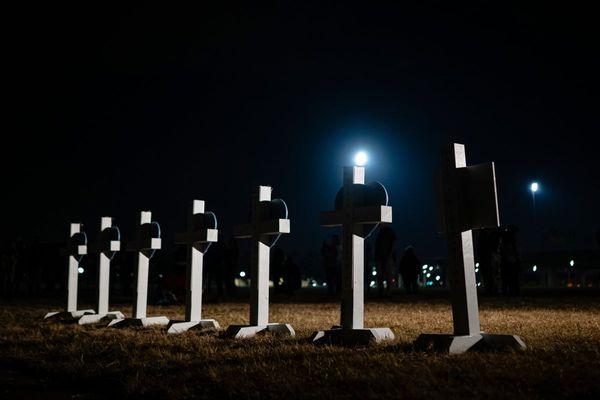
If you’re like most Americans, you still identify as middle class, even as you watch rent, groceries, and basic expenses skyrocket around you. You might not feel rich, but you’re working, paying bills, and maybe even saving a little. So you assume you’re still part of that great economic middle. But what if that label no longer fits?
For decades, the “middle class” has been a marker of stability, security, and modest comfort. It represented the dream: a home, a car or two, maybe a vacation once a year, and enough income to raise a family. But in 2025, that dream is unraveling. Wages haven’t kept up with the cost of living. Healthcare, education, and housing are devouring paychecks. And even those who appear to be doing “okay” are increasingly living one crisis away from financial ruin.
Think you’re still middle class? These five stats might prove otherwise, and they could change how you see your place in the economy forever.
Are You Really Middle Class?
1. If You Don’t Have at Least $50,000 Saved for Retirement by 40, You’re Not Alone, But You’re Behind
A recent study from the Federal Reserve revealed that nearly 60% of Americans in their 40s have less than $50,000 saved for retirement. For the middle class, that number is alarming. Financial experts suggest that by age 40, you should have at least two to three times your annual salary saved. But for most, that’s completely out of reach.
If you’ve been focusing on immediate needs, like paying off student loans, helping aging parents, or covering childcare costs, you’re not unusual. But this trade-off comes at a cost. Retirement insecurity is growing, and the idea of a leisurely post-work life is becoming a luxury, not a guarantee. If your retirement outlook is more about survival than relaxation, you may no longer fit the traditional definition of middle class.
2. 63% of Middle-Income Households Say They’re Living Paycheck to Paycheck
That’s right. Even with incomes between $50,000 and $150,000 per year, most so-called “middle-class” families are barely treading water. According to LendingClub’s latest report, nearly two-thirds of these households report having little to no savings at the end of the month.
This isn’t about irresponsibility. It’s about math. When rent or mortgage payments consume 30-50% of your income, groceries cost 30% more than they did three years ago, and healthcare deductibles swallow thousands annually, what’s left to save? Even dual-income families with decent jobs are stuck in a cycle of working endlessly just to maintain a lifestyle that used to feel comfortable.
3. Homeownership Is Now Out of Reach for Most Middle-Class Americans
There was a time when owning a home was considered the cornerstone of middle-class stability. But in 2025, median home prices in many urban areas will exceed $400,000. At current interest rates, that means monthly payments often exceed $3,000—not including taxes, insurance, and upkeep.
According to Redfin, less than 30% of homes listed in 2024 were considered affordable for the median household income. That’s down dramatically from just a decade ago. Renting isn’t much better. In many cities, monthly rent now rivals or exceeds mortgage payments, leaving families in a lose-lose scenario: unable to buy and barely able to rent.
If you feel like homeownership is slipping further away with every passing year, you’re not imagining it. You’re witnessing a fundamental shift in what the “middle class” can realistically afford.

4. The Average Cost of Raising a Child Now Exceeds $300,000
If you’re raising kids, chances are you’re paying far more than your parents ever did. The USDA reports that the cost of raising a child from birth to age 18 has soared past $310,000—and that doesn’t include college. That’s an average of over $17,000 per year per child.
Childcare, extracurriculars, school supplies, clothing, food—it adds up quickly. For many families, this expense eats away at any opportunity to build wealth, save, or plan for the future. It also forces tough choices: Can you afford a second child? Can you afford for one parent to stay home? Can you afford to move to a better school district?
These trade-offs are deeply personal, but they’re also economic indicators. If your family is constantly having to choose between survival and security, you may be living under the illusion of a middle-class lifestyle without the safety net that used to come with it.
5. Healthcare Costs Are the #1 Cause of Bankruptcy in America
Even insured Americans are drowning in medical debt. One unexpected diagnosis or accident can trigger bills in the tens of thousands, even for those with so-called “good” jobs and employer-sponsored insurance. The middle class used to have enough cushion to absorb a financial shock like this. That’s no longer the case.
Today, over 60% of bankruptcies in the U.S. are tied to medical expenses. Many people try to manage by putting hospital bills on credit cards or taking out loans. This often leads to long-term debt, lowered credit scores, and chronic financial anxiety. If the prospect of getting sick feels like a financial death sentence, that’s not middle class—that’s survival mode.
The Myth of Middle-Class Security Is Cracking
So why do so many people still cling to the “middle class” label? Part of it is cultural. We’ve been conditioned to believe that if you work hard, earn a steady income, and live modestly, you’re part of America’s economic backbone. But that backbone is buckling.
The truth is that many Americans who still feel middle class are, by the numbers, financially fragile. They’re caught between the wealthy elite who build wealth through investments and the working poor who never got a fair shot. The middle class as we know it is shrinking—not because people stopped trying, but because the system stopped working for them.
So… Are You Still Middle Class?
Middle class is no longer just about income. It’s about stability. It’s about your ability to weather an emergency, plan for the future, and live without constant financial stress. If that sounds out of reach lately, you’re not alone, and you’re not imagining it.
It’s time to start rethinking what financial security means in 2025. That doesn’t mean giving up. It means getting real about the numbers, shedding shame, and finding new ways to build resilience.
After reading these stats, do you still feel like you’re middle class, or has the definition quietly changed without anyone saying it out loud?
Read More:
Debt Is the New Middle Class: Why Everyone Looks Rich But Owes Everything
The Middle Class Is Dying And These 7 Everyday Costs Are Killing It







